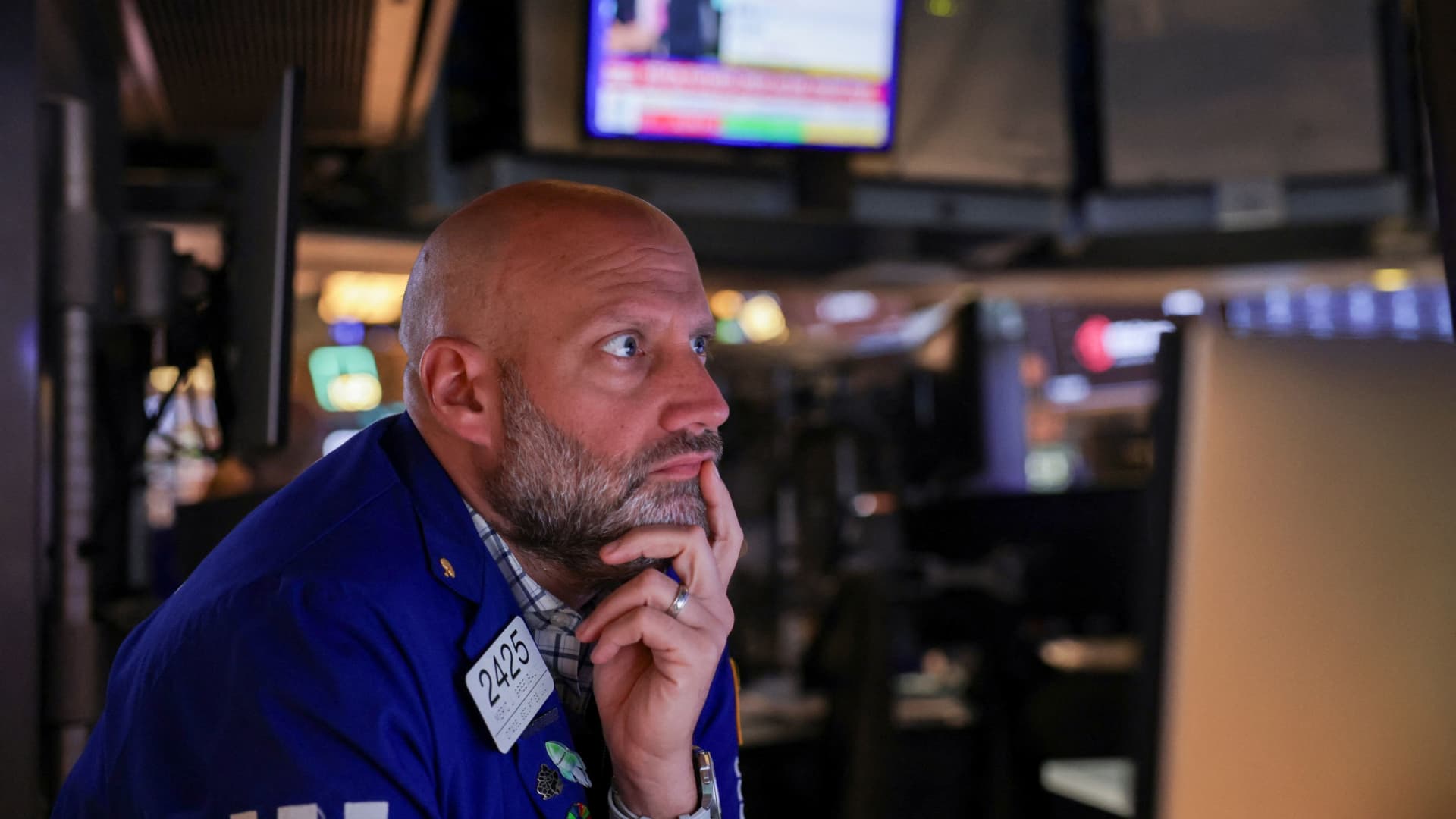Whether the stock market can sustain its big comeback next week will hinge in large part on the employment picture, with investors counting on resilient consumer spending to prop up an economy that’s undergoing a massive upheaval from tariffs. Stocks have staged a rapid turnaround this month, with the S & P 500 rallying roughly 6% and the tech-heavy Nasdaq Composite climbing more than 9%. Tech stocks stocks tied to artificial intelligence especially benefited. Nvidia ‘s strong results this week added to renewed confidence in the sector, helping to drive up the chipmaker more than 23% in May alone. Still, there is concern that investors may be starting to get too complacent at a time when the S & P 500 looks priced for perfection. The broad market index is now trading at a forward price-to-earnings multiple of roughly 21, about where it was at the start of the year when investors worried that lofty valuations meant a pullback was in the offing. “While our own view is that recession risks have moderated since April, equities could still be getting complacent here considering EPS estimates are still getting marked down, the May rally likely got an assist from systematic/technical tailwinds, rates remain high, jobless claims are rising, and the tariff picture remains uncertain despite some recent risk-on headlines,” Venu Krishna, head of U.S. equity-linked strategies at Barclays, said in a note. Ramped up tensions What’s more, trade tensions have ramped up again. The stock rally this month was driven in large part by the preliminary trade deal between the U.S. and China just two weeks ago, which reassured investors the worst of the tariff conflict may be in the past. On Friday, however, President Donald Trump revived fears of an extended trade war, saying China had reneged on their agreement. Nevertheless, Krishna said the stock market has looked past macroeconomic concerns before. In 2023, U.S. equities continued their upward ascent despite surging interest rates that led to a chorus of recession calls sounding from all corners of Wall Street. It was a demonstration of the stock market’s “willingness to continue looking through macro distortions in the post-Covid era,” Krishna said. Much of the reason investors appear willing to look past the macroeconomic challenges lies in the strength of the consumer, whose spending accounts for two thirds of the economy and which has powered forward even as sentiment tanked around Trump’s tariffs. That has put greater attention on the employment data, with investors fearful that upcoming reports will start to show consumers and businesses crumbling under the weight of tariffs. Economists polled by FactSet expect the May jobs report next week will show the U.S. economy added just 125,000 jobs last month, down from the 177,000 jobs added in April. An in-line or stronger-than-expected result could be taken in stride by the stock market, while a miss on the consensus estimate could spook investors. For the time being, many investors remain optimistic. They expect a recession could be averted, even if a slowdown is inevitable, as both consumers and companies have so far weathered the tariff uncertainty better than was expected. Tight labor market “It’s still a pretty tight labor market,” said Anthony Saglimbene, chief market strategist at Ameriprise Financial. “Employers have been unwilling to shed employees, even if they’re uncertain about the future, because they lived through the pandemic, and understood how hard it was to hire back and get qualified workers.” “And so, the expectation is that, and we’ll see this week, our labor market’s holding up,” Saglimbene added. Still, economists worry tariffs are slowly making their impact felt. EY-Parthenon chief economist Gregory Daco said that durable goods spending fell in the latest April personal income and outlays data, while the personal savings rate rose. “Tariffs had begun to take hold — but their full impact had yet to materialize,” Daco wrote. “With employment growth slowing, income gains moderating and the inflationary effects of tariffs building, households are likely to become more cautious in the months ahead.” “The Fed and Chair Powell deserve credit for guiding the economy to this point,” Daco added. “But any summer celebration may be premature: a tariff-induced inflation storm is on the horizon.” Fresh trade aggression Tariffs will continue to be top of mind for investors in the week ahead, especially after a federal court this week halted the majority of the administration’s tariffs, only to be reversed by an appeals court granting a stay that allowed the levies to remain in place until next week. Investors worry the legal concerns only inject further uncertainty into tariff policy, especially if the Trump administration finds workarounds to put levies in place that could spur more trade aggression from the U.S. and retaliation abroad. Others worry that investors betting on the TACO trade, a term coined by the Financial Times standing for “Trump Always Chickens Out” on trade deals, could be a dangerous assumption. “We might actually get aggression where the market was anticipating we wouldn’t, because [Trump] can’t do exactly what he wanted to do with tariffs in the first place,” Ameriprise’s Saglimbene said. Week ahead calendar All times ET. Monday, June 2 9:45 a.m. S & P PMI Manufacturing final (May) 10 a.m. Construction Spending (May) 10 a.m. ISM Manufacturing (April) Earnings: The Campbell’s Co. Tuesday, June 3 10 a.m. Durable Orders final (April) 10 a.m. Factory Orders (April) 10 a.m. JOLTS Job Openings (May) Earnings: Hewlett Packard Enterprise , CrowdStrike Holdings , Dollar General Wednesday, June 4 9:45 a.m. PMI Composite final (May) 9:45 a.m. S & P PMI Services final (May) 10 a.m. ISM Services PMI (May) 2 p.m. Fed Beige Book Earnings: Dollar Tree Thursday, June 5 8:30 a.m. Continuing Jobless Claims (05/24) 8:30 a.m. Initial Claims (05/31) 8:30 a.m. Unit Labor Costs final (Q1) 8:30 a.m. Productivity final (Q1) 8:30 a.m. Trade Balance (April) Earnings: Broadcom , Brown-Forman , Fastenal Friday, June 6 8:30 a.m. Hourly Earnings preliminary (May) 8:30 a.m. Average Workweek preliminary (May) 8:30 a.m. Manufacturing Payrolls (May) 8:30 a.m. Nonfarm Payrolls (May) 8:30 a.m. Participation Rate (May) 8:30 a.m. Private Nonfarm Payrolls (May) 8:30 a.m. Unemployment Rate (May) 3:00 p.m. Consumer Credit (April)





